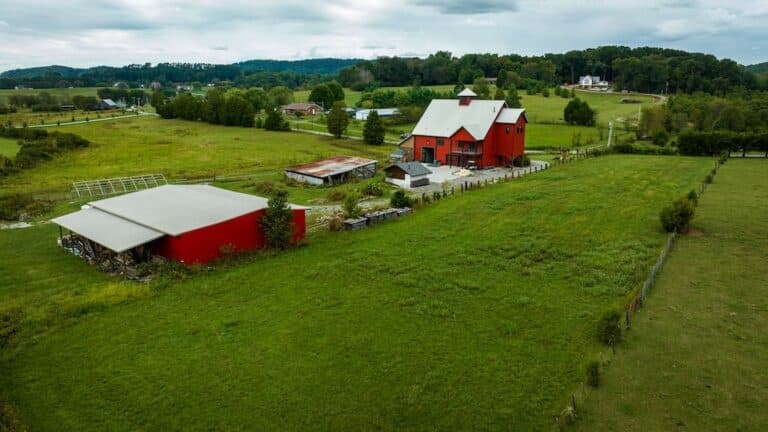In some urban areas today, real estate is a seller’s market. With numerous buyers lined up for one property, you can miss out on the home of your dreams without a loan pre-approval in hand.
While farm and ranch real estate deals may not move so quickly, the same basic principles still apply. By doing your homework before you apply for financing, you can put yourself in a prime position to move when the right property becomes available.
Start early
The first step in starting the loan application process is to get organized. Compile basic documents and financial records early. Lenders, including Farm Credit institutions, will provide applicants with a checklist of the information needed to complete the application.
“The process for both the customer and the loan officer goes much more smoothly when the information is bundled up and complete,” says Justin Wiethorn, Texas Land Bank regional president. “If an applicant can’t get it in, it adds a second or third round of follow-up, which delays critical processes and can be frustrating for the customer.”
Wiethorn says he is a proponent of obtaining preapprovals, and in some cases can offer a preapproval that is good for six months. He also uses this time to educate customers who aren’t as familiar with the loan process on various components needed later, such as surveys, title work and appraisals, so they will know what to expect.
Details matter
Providing as many details as possible early in the process can be vital.
In cases of past delinquencies, be truthful. Most lenders say that lying or withholding information is one of the most detrimental things an applicant can do. Issues can often be dealt with, so keeping the loan officer informed from the very beginning can save critical time. This also applies when providing a thorough description of the land being offered as security.
Know your credit score
Amanda Simpson, assistant vice president with Alabama Farm Credit, describes a sad scene she has seen play out in her office time and time again.
“I’ve had a potential customer come in expecting their credit score to be 100 points higher than it is, because they don’t realize that a credit report was run dozens of times when they were car shopping and allowed various dealers to pull their score, or a medical collection shows up due to an unpaid bill from years earlier that the applicant has no idea exists,” she says. “In our branch, we typically don’t pull a credit score until we feel there is a legitimate loan application—meaning we have a completed financial statement, credit authorization and other information depending upon the specific request.”
Know down payment requirements and how much you can put down.
While actual down payment requirements may vary, they are typically based on credit factors analyzed by the lender. Wiethorn says that the industry standard for residential loans is 20 percent, and coming up with that amount of money can be an obstacle for many applicants. This is especially true for younger or first-time borrowers, or those who received home mortgages with small down payments in recent years and might have a difficult time transitioning to the industry standard.
Ag loans, in comparison, often require 30 percent or more down, depending on the loan purpose and lending institution.
“Farm Credit does have a loan program for young, beginning or small producers, which has less restrictive credit standards to assist them with the transition into farming or ranching,” Wiethorn says. “This includes down payment requirements, as well as our ability to work with outside sources, such as the Farm Service Agency. While there are some restrictions on the use of this program, it’s been a great tool to assist some younger prospective borrowers with their first land purchase.”
Learn the “Five Cs of Credit”
Among other factors, lenders generally follow the “Five Cs of Credit” when making loan decisions:
- Character: the borrower’s honesty and integrity
- Capacity: the applicant’s financial capacity to repay the loan
- Capital: the applicant’s liquidity and solvency
- Collateral: the physical property that will minimize the lender’s risk in the event of default
- Conditions: the conditions for granting and repaying the loan
“The ‘five Cs’ will keep you out of trouble,” Kenneth Hooper, Panhandle-Plains Land Bank senior vice president/branch manager, says. “Farm Credit has always stuck to them, and I believe it’s one of the reasons our system has been successful for more than 95 years. It’s old stuff, but it works.”
Get to know your lender
Even though an applicant is seeking “approval” from a lender during a loan application process, lenders really do want to work as a team with the applicant. Specifically with Farm Credit lenders, Simpson says that because Farm Credit specializes in rural lending, she wants her customers to feel they can call on her for a number of questions related to their operations.
Hooper agrees, and says that a good loan officer will put a lot of work into building a strong rapport with customers.
“A loan officer should not just be someone gathering documents,” Hooper says. “We intend for this to be a long-term relationship, and want to be helpful and as much of an information source as possible — now and down the road.”
Document checklist
While the list of specific documents may vary from lender to lender, all loan officers will look for the following:
- Application and current financial statement: These forms will be provided by the lender. Separate financial statements will be needed for personal and related entities such as partnerships or corporations in which the applicant has an interest.
- Past three years of completed tax returns: Panhandle-Plains Land Bank Senior Vice President/Branch Manager Kenneth Hooper says that the reason for three years of returns (which is standard for agricultural loans) is not to find good years or bad years, but to find trends in income.
- Legal description of land offered as security: This includes a deed or survey, accompanied by an aerial photo or a surveyor’s plat. If the offered security is a rural residence, a surveyor’s plat must be provided.
- Savings and credit information: The lender will want copies of all bank statements, certificates of deposit, mutual funds, stocks, bonds, etc., for each applicant.
- Authorization form: This authorizes the lender to obtain credit reports; employment and income verifications; information related to assets, liabilities or insurance coverage; and any other information needed to complete the application.
- Construction documents: An application for a construction loan must include a complete set of plans and specifications or a copy of the construction bid or contract signed by the applicant and the builder.
This article originally appeared in Farm Credit’s Landscapes magazine. Visit www.FindFarmCredit.com for more information on securing a financial loan for your agri-business, ranch or rural recreation property purchase.


